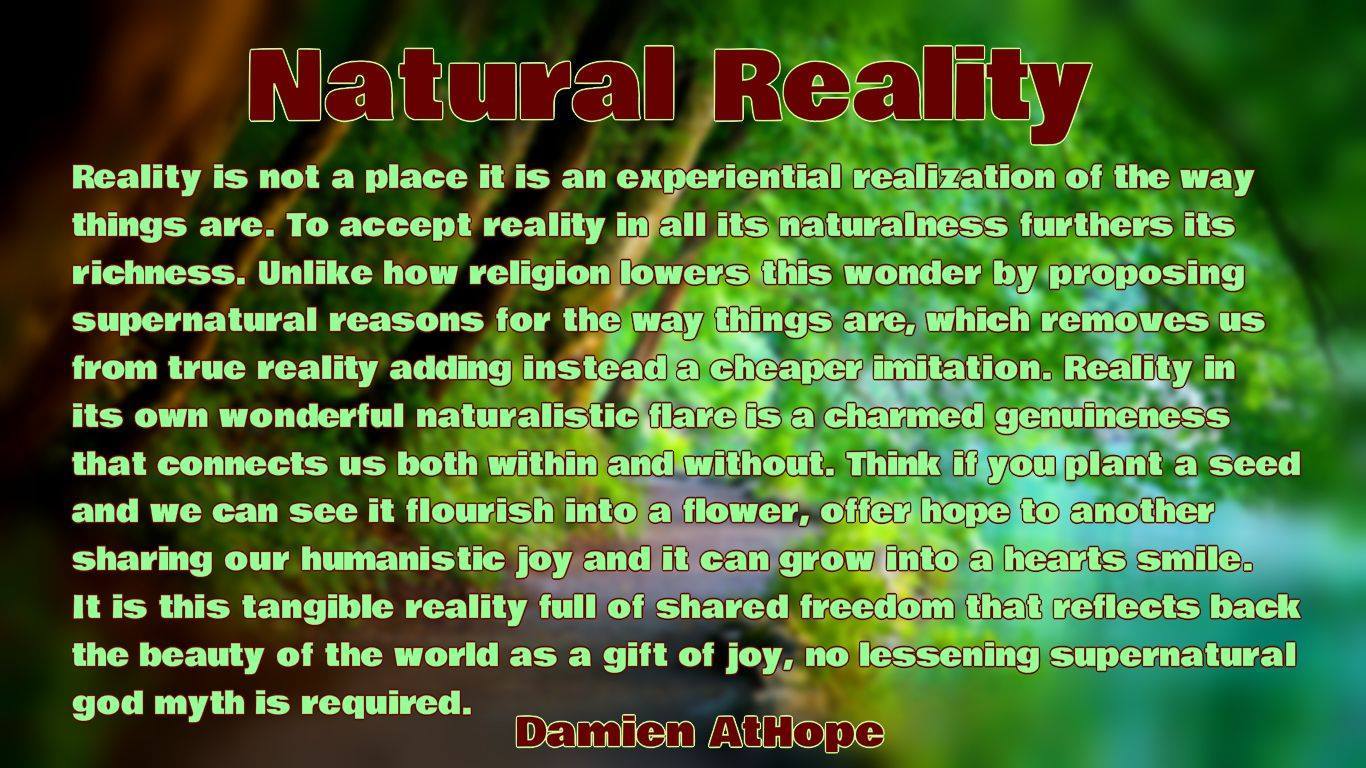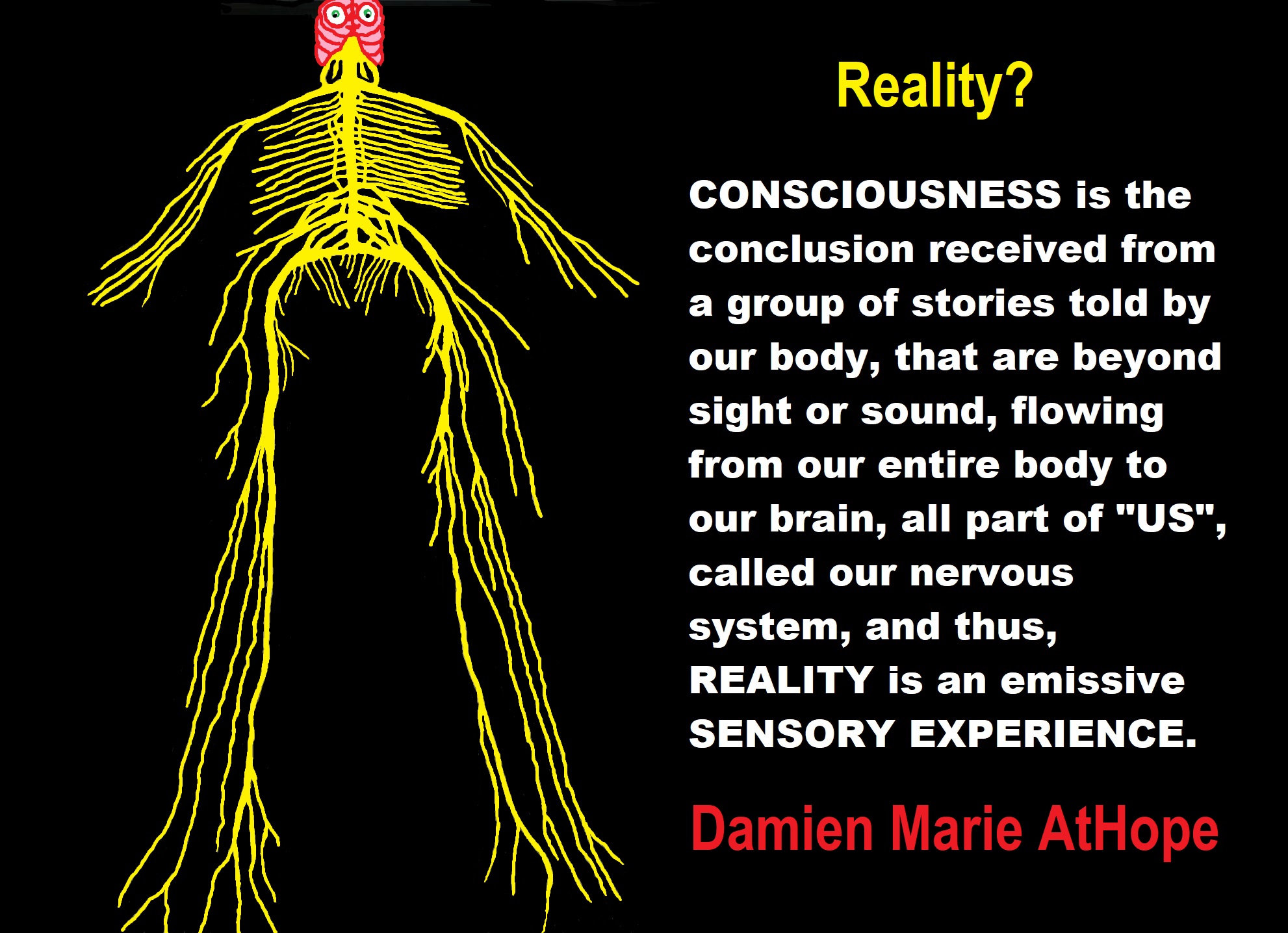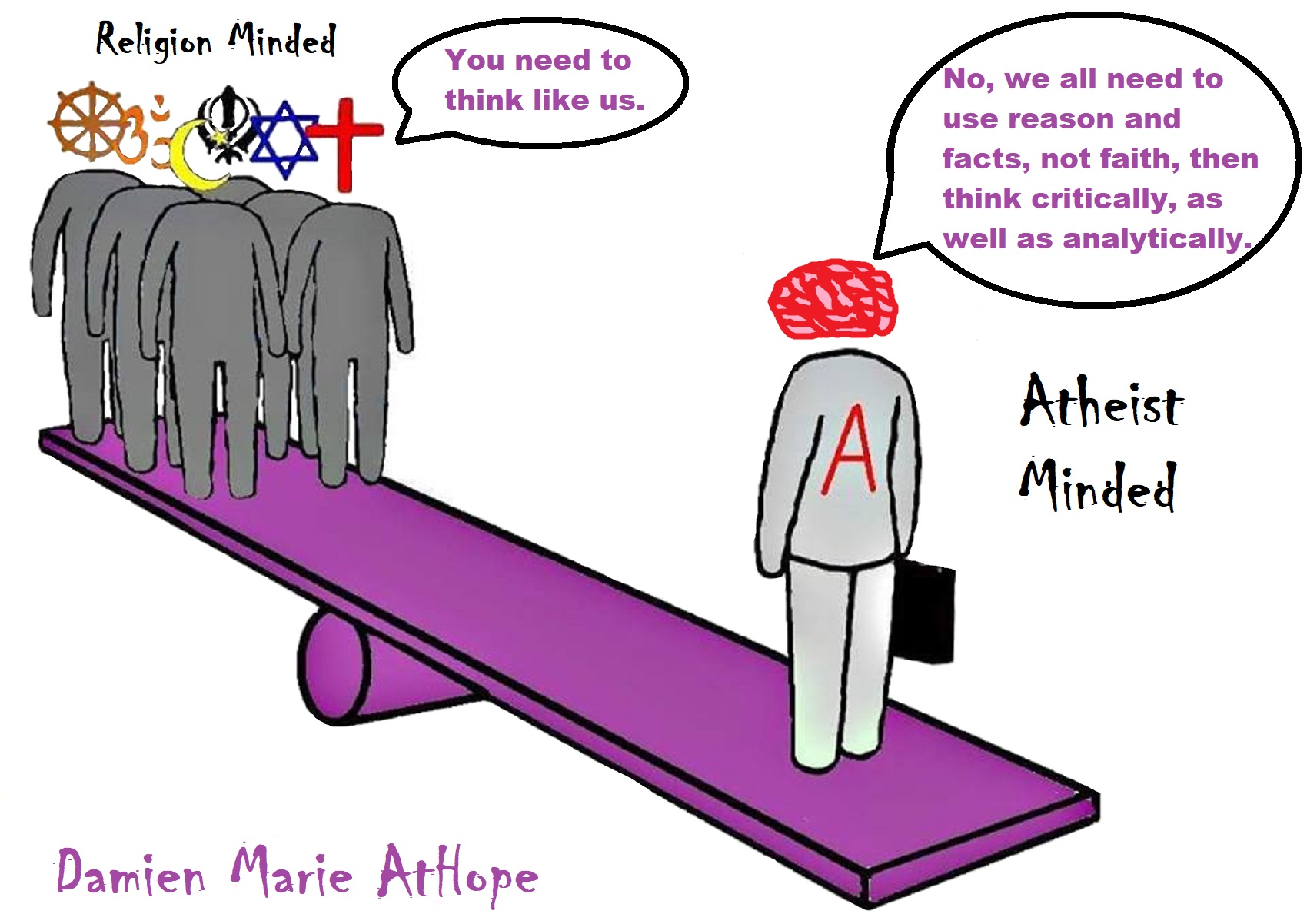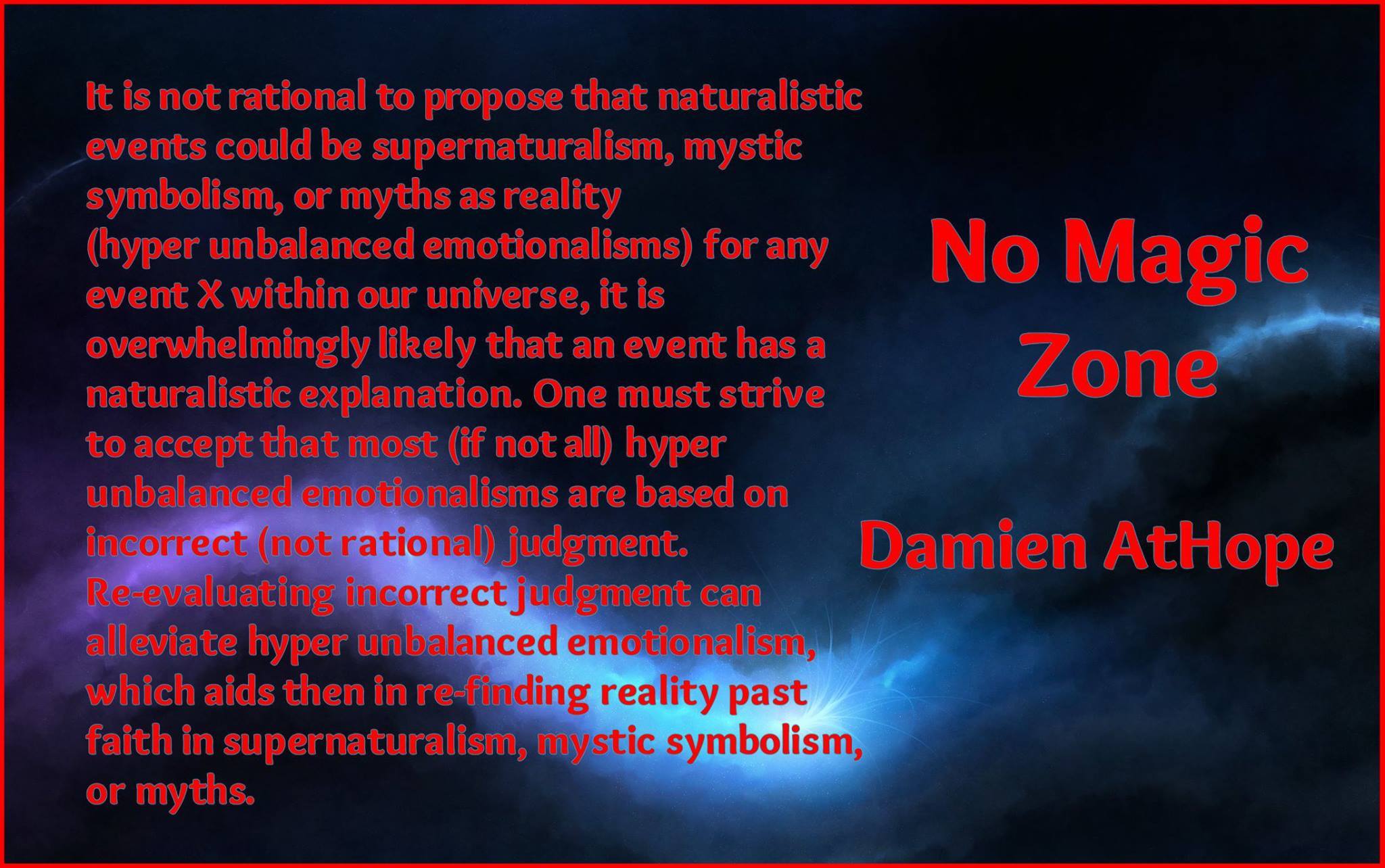


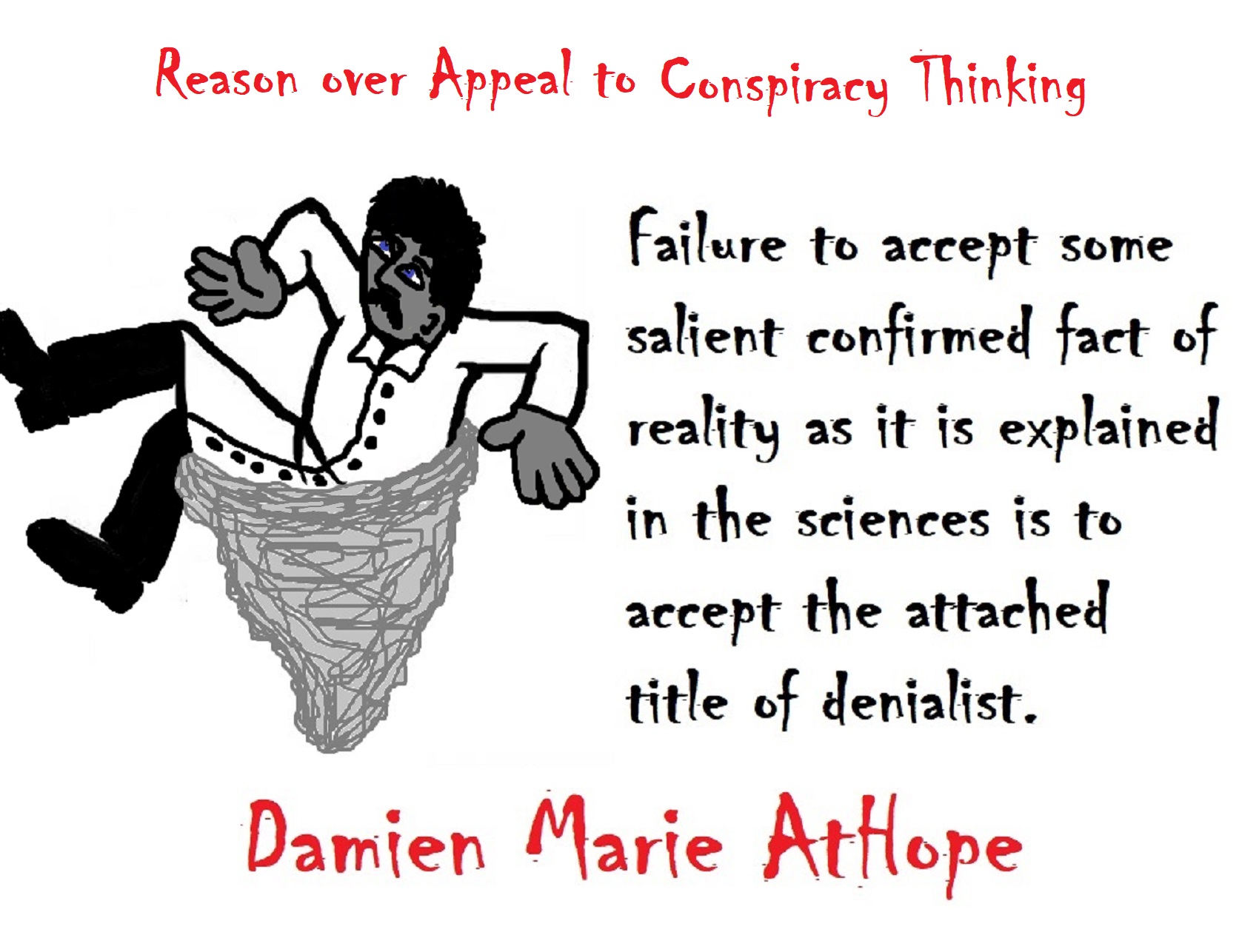
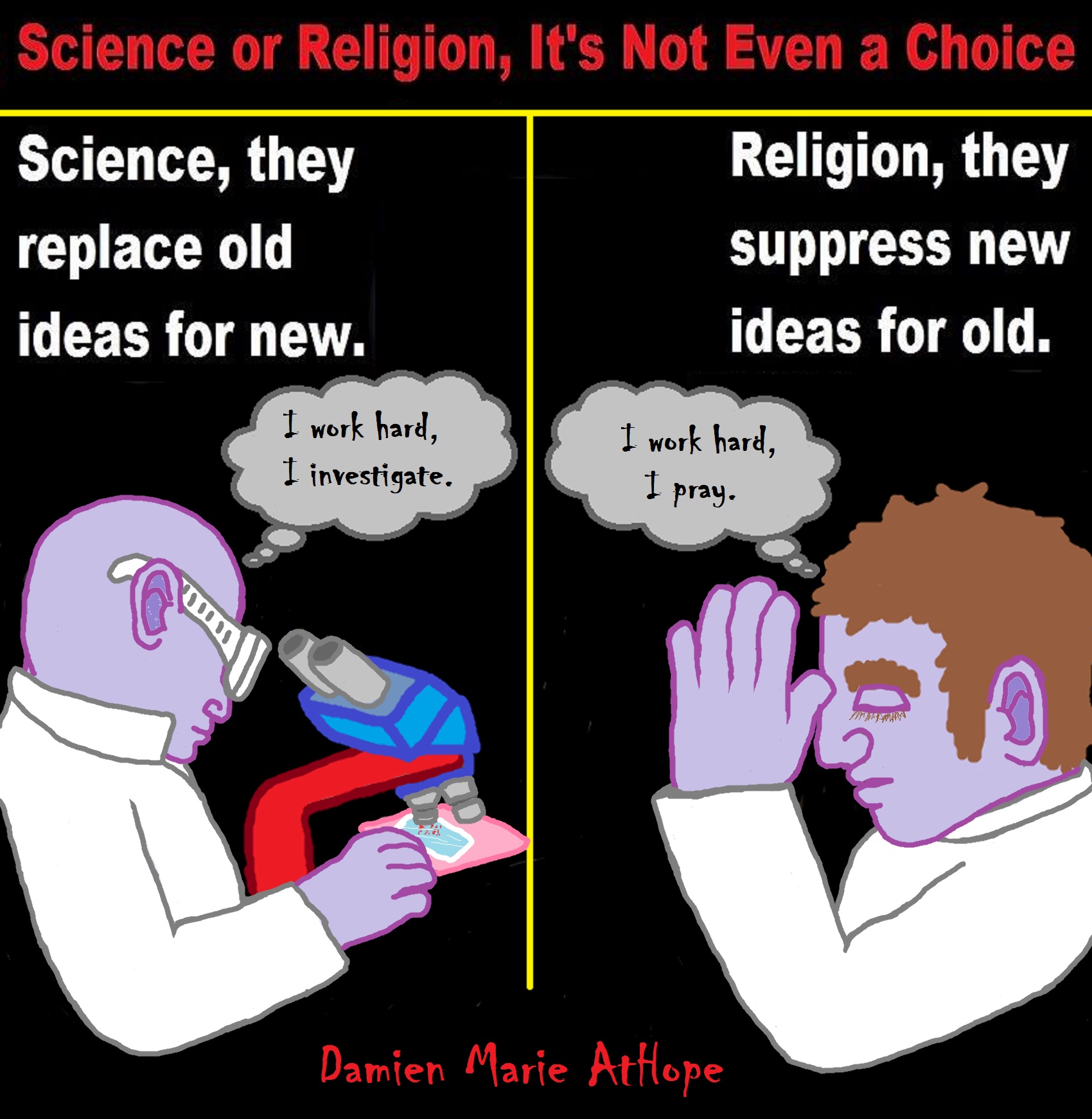
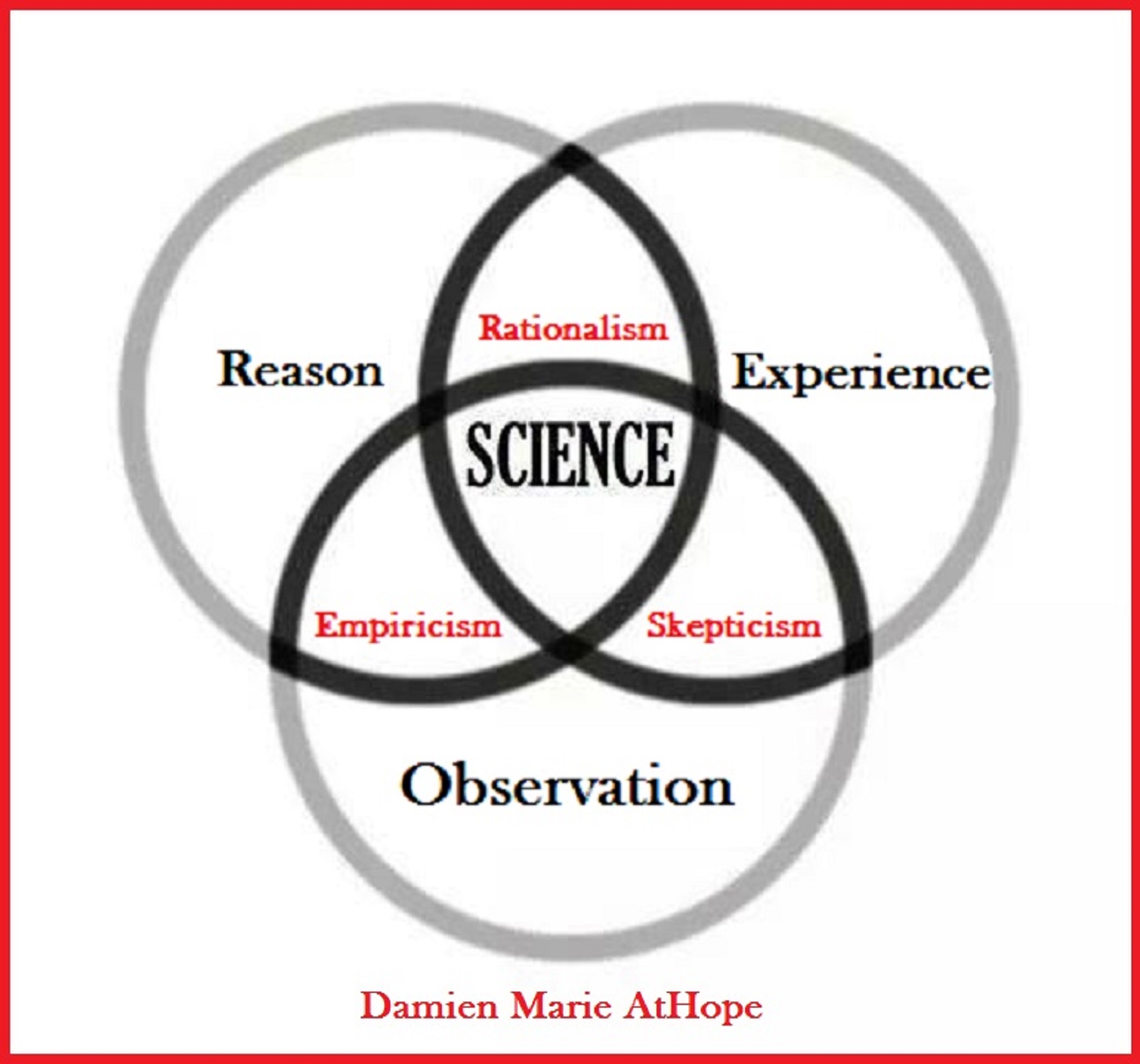
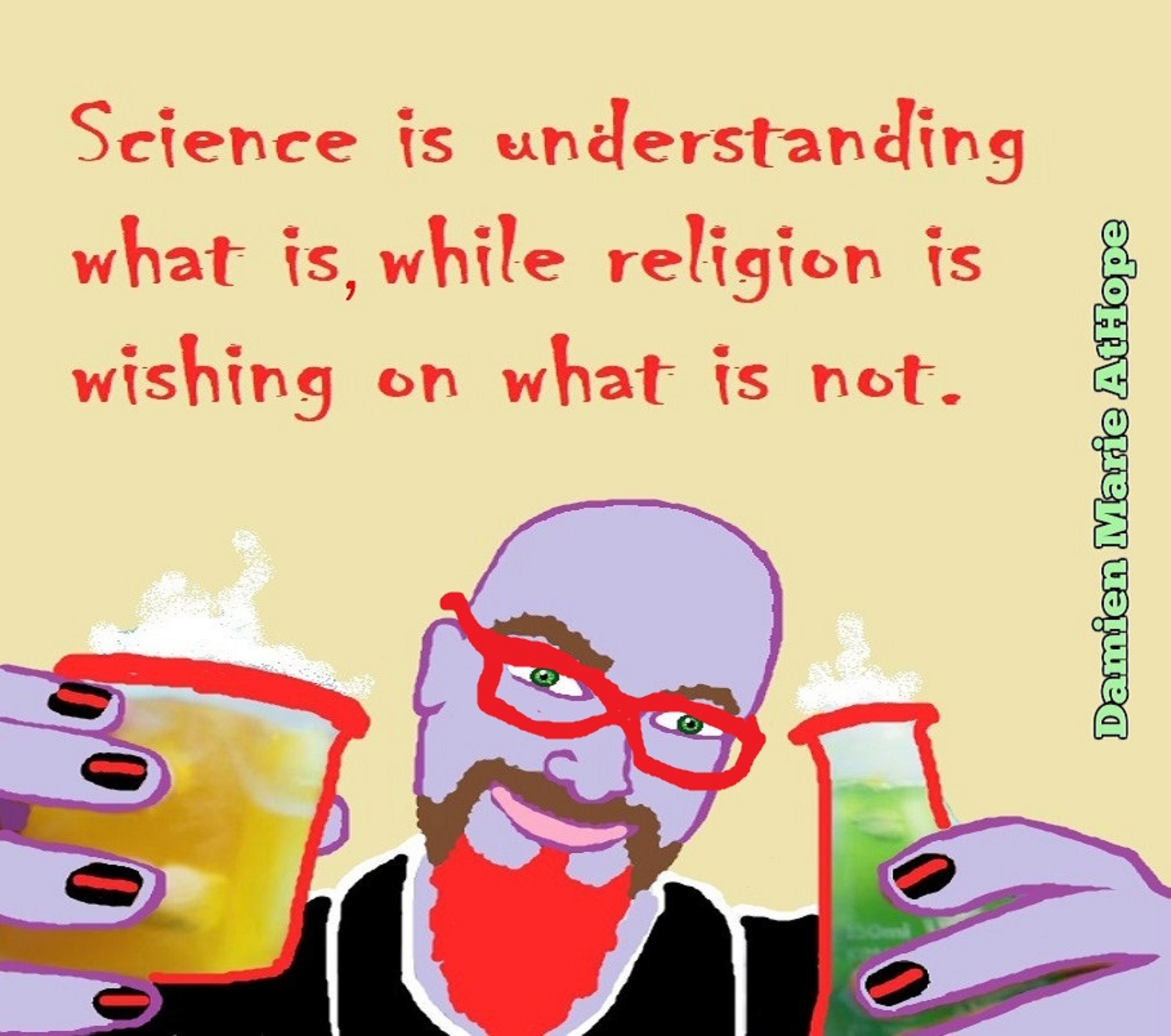
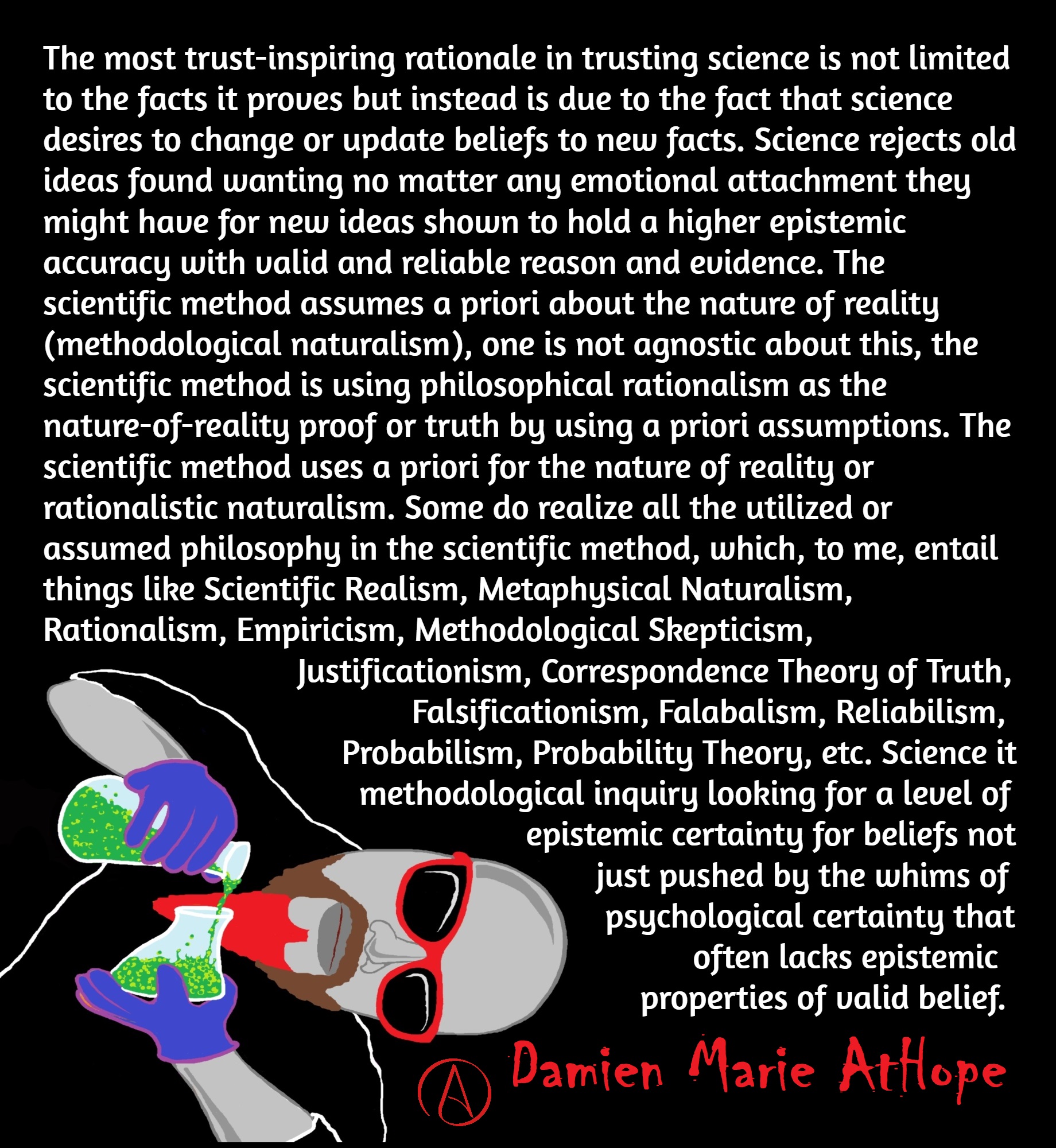
Evolution is FACT in many ways!
- Evolution of the Earth?
- Oxygen is an Evolutionary Constant as well as a Constraint.
- Evolutionary Roots of Compassion
- Technological Advances in Evolution
- Out of Africa: “the evolution of religion seems tied to the movement of people”
- Climate Change and Human Evolution
- Humans are Part of Evolution, not a Special Creation
- Evolution Of Science at least by 5,500 years ago
Just because its called a scientific theory does not a mean, it is a guess. A scientific theory such as Evolution is not reached by belief or wishful thinking like religions’ purposed imaginary creation explanations. Instead, Evolution can be shown as fact because it is acquired through rigorous repeatedly scientific tested investigation and is a confirmed aspect of the natural world that if well substantiated by evidence from several different sciences. Here is another fact young earth believers, the earth is over four billion years old. This is, coincidentally, the same age as the rest of the planets in our Solar System, as well as the sun. It is not because of that god myth that they are all the same age. It is not magic or a coincidence either. What has to be understood is the sun and the planets including our little Earth all formed together from a diffused cloud of hydrogen. If you are a religionist/fideist and still doubt that the world is that old because your holy book tells you the earth is only a few thousand years old, you can let that thinking go now. The oldest rocks ever found on earth are over 4 billion years old, are you getting the hint, at the similarity in the naturalistic evidence? 1, 2
Is Evolution a Theory or a Fact? “It is both.”
Creationism is a debunked religious conspiracy theory, just like its wolf in sheep’s clothing cousin, intelligent destine. The theory of evolution originated with Charles Darwin but left hypothesis, when it was supported by study of DNA combined with physical evidence. Creationism debunking examples which support the Theory of Evolution are a universality in the worlds genetic code along with cross species genetic commonalities. While it is scientifically understandable to grasp that we share DNA with great apes including orangutans, chimpanzees, gorillas, and bonobos; which can share up to approximately 98% of human DNA but it does not end there by a long shot. Humans also share DNA with other animals, as we all evolved together in a since or more accurately share common evolutionary ancestors. You may be amazed to learn mice seemingly so different than us can share up to approximately 90% of human DNA, dogs can share up to approximately 80% of human DNA but then all mammals have a DNA similarity; in fact, we share DNA genes with plants and with every other living organism. This is very strong evidence for a common ancestor from which all life descended; because of DNA evidence that appears to be shared by all life on Earth. Then there is the other very strong proof of the fossil record, from the simplest fossils in the oldest rocks to the vast amount of skeletal remains all accumulatively supporting evolution again and again. Therefore, evidence supporting evolution presented must be added with so many other things that could not just fill a book on its own, like common traits in embryos, extra. The terrain of evidence supporting the theory of evolution is so vast it is less like a mountain of evidence, than a mountain range of evidence from multiple areas of science creating a unified whole. Moreover, there is simply so much more valid and reliable reason and evidence confirming the theory of evolution that to reject evolution, is paramount to one accepting that they can be view as a discredited unscientific magical conspiracy theorist. ref
Lines of evidence: The science of evolution
“Scientific” Creationism as a Pseudoscience
National Center for Science Education, Inc.
The highly influential philosopher of science, Sir Karl Popper, in his now classic The Logic of Scientific Discovery(1959), focuses upon one major criterion for distinguishing between legitimate science and pseudoscience. He labels this criterion falsifiability and contends that any theory claiming a legitimate scientific status must be, at least in principle, falsifiable. That is, there must be some conceivable observation that could disprove the theory. It is most relevant to note that Popper explicitly recognizes that a legitimate scientific theory may be falsifiable in principle but, due to limitations of time, space, or technology, unfalsifiable in practice. I think it is safe to say, in light of the extensive references to Popper’s work throughout the whole spectrum of the professional literature, that for most modern scientists and philosophers of science Popper’s concept of falsifiability has come to completely replace the concept of proof as the major criterion for evaluating the worth of scientific theories. It is now generally recognized that the concept of proof was improperly transferred from the domains of pure mathematics and logic, where it still retains its legitimacy, to the realm of the empirical sciences. We now realize that no legitimate scientific theory can be proven in any kind of absolute sense.
The reason for this is basically a logical one. Given that every theory is a product of human reason and thus potentially fallible, it, therefore, follows that there is always the possibility that someone may develop a superior theory—that is, one that explains more or one that explains better. Hence, as long as there is this logical possibility, we can never say of any existing theory that it has been proven in any absolute sense. (In fact, it is really superfluous to qualify the word proof with the modifier absolute.) Hence, when we do run across the use of the term proof, or some variation on it, either in the older literature or in the current writings of those few who have not been exposed to Popper’s influence, we should automatically translate the language into a form consistent with this modern view. For example, the claim that some theory has been “proven” should be read to say no more than that there is “overwhelming evidence” supportive of the theory. In light of the foregoing, it is in a very basic sense illogical or reflective of a deep ignorance of the modern philosophy of science to demand that any theory must be proven before it can be considered legitimately scientific. Yet, one of the most persistent claims to be found in the literature of “scientific” creationism is the contention that the theory of evolution is not a valid scientific theory because it has not been “scientifically proven” (see, for example, Morris et al. 1974:4; Wysong, 1976:44). This contention is, incidentally, quite often framed in a vocabulary that creationists have evidently brought with them from their common grounding in fundamentalist theology. Just as nonfundamentalists are dismissed as not being “true” Christians, so, in a parallel exercise in word magic, evolutionary scientists are held to not be practicing “true” science. The briefest of analyses soon reveals that “true” Christianity and “true” science are simply Christianity and science as defined by fundamentalists and “scientific” creationists, respectively, with a total disregard for any definitions offered by nonfundamentalists and “nonscientific” creationists to the effect that “scientific” creationism enjoys some sort of scientific validity simply because a number of its advocates have earned degrees in various sciences—as if the conferring of such a degree somehow magically transforms one’s religious convictions into scientific propositions (see, for example, Morris et al. 1974:8; Wysong, 1976:21). Returning to Popper’s concept of falsifiability and its role in the evaluation of scientific theories, it is important to note that Popper pointed out that a theory is to be judged just as much for what it predicts will not occur as for what it predicts will occur. In other words, a legitimately scientific theory not only predicts various allowable observable events but also forbids the occurrence of a whole domain of possible events. While the occurrence of one of the allowable events does not prove the theory (because the same event could have been predicted by other theories as well), the occurrence of one of the forbidden events does falsify it. (It should be pointed out, however, that, when confronted with one or a few such falsifying events, a theory that has withstood numerous attempts at falsification and which has no serious, legitimately scientific competitor, will still be retained, in spite of such anomalies.)
Let us now consider how “scientific” creationism on the one hand and the theory of evolution on the other stand up to the criterion of falsifiability. Here we shall see the most basic reason why “scientific” creationism is forever doomed to remain in the realm of pseudoscience. By definition, “scientific” creationism is irrevocably grounded in an appeal to the existence and operation of an obviously omnipotent supernatural being—that is, a being that by its very nature is capable of virtually anything. It, therefore, follows that there is literally no conceivable observation that cannot be reconciled with the virtually limitless actions of such a being. “Scientific” creationism thus lacks the central defining characteristic of all modern scientific theories. It is absolutely immune to falsification. Literally, any problem confronted by “scientific” creationism as it is applied to the empirical world can be resolved through an appeal to unknown and unknowable supernatural operations. And although “scientific” creationists are extremely fond of pointing out various alleged problems with the theory of evolution (problems that are more often than not the result of their own strawman conceptions of both science and evolution), they appear to remain blissfully ignorant of the fact that any legitimate scientific theory must generate problems. (Apparently, once again under the influence of their theology, “scientific” creationists feel that “true” science is some kind of quest for absolute certainty—a conception of science that is totally rejected by Popper.) It is extremely important to emphasize again that “scientific” creationism is not, as is the case with some legitimately scientific theories, only unfalsifiable in practice; it is also unfalsifiable in principle. The same point can be expressed in another way. Science is concerned with explaining why the world is one way rather than some other way. The introduction of an omnipotent supernatural being into any explanation immediately precludes this possibility. As the scriptures tell us, “With God, all things are possible.” This may be fine theology, but it stands in direct opposition to the central goal of all science. This is why “scientific” creationism actually acts as a brake on any valid scientific research. It is really what Gillespie characterizes as an antitheory—a void which has the function of knowledge but which conveys none (1979, p. 8). I will illustrate this diametric difference between legitimate science and the “true” science of “scientific” creationism with an example from the field of biological anthropology.
According to the theory of evolution, s it has been applied to the development of the Primate Order, the chimpanzees represent our closest living relatives. This conclusion was based upon comparative anatomy and the principle that similarities in form reflect evolutionary relationship. Once again, this cannot be said to be a “proof” of the postulated evolutionary relationship. Biologists can cite many instances of parallel evolution in which forms that are only distantly related have developed similarities in structure—for example, the almost identical structures of human and octopus eyes. However, the recently developed techniques for measuring the detailed structure of the most basic molecules of life, DNA and protein molecules, have provided a potential means of falsifying the theory of evolution or at least this particular implication of that theory. Simply consider the two extremely opposed possible research results: on the one hand, it could have conceivably turned out that humans and chimpanzees were totally dissimilar in their molecular structures; on the other hand, it could have been found—as it was—that humans and chimps are practically identical in those structures. (Indeed, in the molecules so far compared, the identity has been found to be over 99 percent.) Had the former situation been found, it would have constituted a falsification of the postulated close evolutionary relationship between humans and chimpanzees. Were there to be similar discoveries throughout the whole range of postulated evolutionary relationships, this would constitute a severe, perhaps even fatal, blow to the entire evolutionary edifice. In point of fact, as now has been well established, the findings of such molecular comparisons have provided overwhelming support for the evolutionary relationships postulated initially on the basis of comparative anatomy. Now consider the alternative responses of “scientific” creationists to these same two possibly opposing research findings. Had the molecular researchers found that human and chimpanzee DNA and protein structures were totally dissimilar, the “scientific” creationists would not have been able to contain themselves. They would have been shouting from the rooftops that this was “proof” positive of the validity of “scientific” creationism—that this finding revealed clear evidence of the creator’s intention to keep distinct the “created kinds.” As it is, of course, the research results were just the opposite. Now, we may safely anticipate that “scientific” creationists will be arguing that this finding, too, is just as their “model” would have predicted, that what we have here is clear evidence of the creator’s grand common design. Heads I win; tails you lose. Now, it can be appreciated why “scientific” creationists, in setting up their debates around the world, are so fond of framing those debates around some variation on the question: “Does evolution or creation provide a better explanation of the scientific evidence?” Invariably, the “scientific” creationists glibly slide over the fact that scientific evidence is only scientific if it is viewed from the framework of science—a framework that, as we have seen, excludes appeals to the supernatural. Thus, in one recent presentation of the creationist position, we are informed of the “fact” that “the Creation Model fits the real facts of science at least as well as the Evolution Model” (Morris and Parker, 1982, xiv; emphasis added). Note, incidentally, the word magic implicit in the use of the qualifier real to imply that any “facts of science” which either do not support creationism or which do support evolution are not “real” scientific facts—the qualifier real is the functional equivalent of true in the writings of fundamentalist “scientific” creationists. Thus, “scientific” creationists consistently argue that creationism provides a better explanation than does the theory of evolution.
And in this, they are in a very limited sense absolutely correct. Given an omnipotent supernatural creator, virtually anything can be “explained” as a result of that creator’s actions and desires. The problem is, of course, that such an “explanation” is not a scientific one, and it is totally dishonest to imply that it is by framing the question at issue in terms of “scientific facts.” In my own debating experience with Duane Gish of the Institute for Creation Research, when I raised this issue, he neatly slithered away from the point with an observation to the effect that, whenever he came to debate scientists, he wanted to talk about scientific facts while they wanted to talk philosophy (as if the question of what constitutes a scientific fact is totally unrelated to the philosophy of science). Considerations such as these are almost totally ignored in the writings of “scientific” creationists. Indeed, in one of those unintended ironies with which that literature abounds, Sir Karl Popper is actually cited as a scientific authority who is opposed to the theory of evolution. He was never, of course, a “scientific” creationist; he simply once had some reservations about various aspects of general evolutionary theory. Today, Popper is a full-blown evolutionist, a point conveniently and consistently ignored by those “scientific” creationists who cite his earlier statements. Indeed, when Gish, Bliss, and Bird of the ICR cite a later criticism of Popper’s regarding natural selection (1981, p. i), they even suppress the full title of the book referred to. They identify it in their bibliography as Objective Knowledge when in fact the full title is Objective Knowledge: An Evolutionary Approach (1975). Also conveniently ignored is the fact that, in this very same book, Popper explicitly rejects his earlier criticisms and frames his description of the nature of science in evolutionary language. He speaks, for example, of competing theories in terms of the survival of the fittest. Unlike legitimate scientists, as Popper conceives of them, “scientific” creationists have a highly developed talent for ignoring and even denying any facts that contradict their preconceptions. Wysong, for example, pays lip service to Popper’s criterion of falsifiability (1976, p. 27) and even contends that in evaluating the relative worth of creationism as opposed to the theory of evolution, “each of the propositions must be falsifiable” (1976, p. 49). Lip service having been paid, this is the last we hear of the concept of falsifiability in the remaining 406 pages of his book! Yet, it cannot be denied that “scientific” creationists are enamored of at least the form, if not the substance, of science. One cannot escape the suspicion that if the fundamentalists who provide the overwhelming majority of “scientific” creationists were to adopt a clerical garb it would consist of a lab coat emblazoned with a cross.
At the same time, they are obviously committed to a set of religious dogmas that bring them into direct conflict with one of the most widely accepted theories in all of science: the theory of evolution. Thus, they find themselves in a perpetual double bind. And their attempts to resolve this double bind take the form of an effort to redefine “true” science in such a manner that it no longer conflicts with their cherished fundamentalist dogmas. As a result, they have developed their own little “folk conception” of science, one that is totally subservient to their preconceived fundamentalist theology. Folk conception is a term used by cultural anthropologists to refer to the set of ideas that the people in a particular culture or subculture have about some area of reality. For example, people in different cultures have different folk conceptions of the law, of the proper form of family, of morality, and so forth. However, the folk conception of “true” science developed by “scientific” creationists has about as much resemblance to legitimate science as does astrology to astronomy or witchcraft to medicine. To a great extent it is simply and simplistically an extended exercise in two old debater’s tactics: begging the question (that is, seeking to define the point at issue in such a manner so as to win the debate by definition) and the strawman argument (that is, misdefining your opponent’s position in such a way as to guarantee its easy destruction) combined with liberal doses of word magic. Word magic is a typical feature of primitive closed thought systems in which it is commonly believed that words have the power to create or affect the things for which they stand (see, Horton, 1967). In coming up with their definitions of “true” science, “scientific” creationists virtually never rely upon the writings of philosophers of science. At best, their definitions began as unjustified extrapolations from dictionary definitions, usually combined with out-of-context quotes gleaned from the writings of evolutionary scientists (see, for example, Gish, 1973, p 2; and, for particularly simple-minded definitions of science and the scientific method, Wysong, 1976, pp. 40-43). One omnipresent characteristic of “scientific” creationists’ folk definitions of science is the contention that “true” science cannot address itself to the explanation of any event that occurred before there were any scientists present to observe it (see, for example, Morris et al. 1974, pp. 4-5; Gish, 1973, p. 3; Wysong, 1976, p. 43; Morris and Parker, 1982, xiii). One can see the obvious fundamentalist theological motivations that underlie this particular begging of the question. In one fell swoop, by definition, evolutionary studies, historical geology, and much of astronomy are automatically excluded from the domain of legitimate science.
Before dealing with the shortcomings of this particular attempt to restrict the range of science, it is most significant to note that this tactical maneuver also automatically excludes “scientific” creationism from the realm of “true” science. Surprisingly, in an uncharacteristic display of honesty and humility, this is frequently openly conceded by “scientific” creationists themselves. But, this is really a form of copping a plea to a lesser offense as well as being a kind of diversionary tactic. By pretending that they are guilty of some kind of alleged scientific misdemeanor—that is, dealing with events that occurred prior to the existence of scientific witnesses—the “scientific” creationists draw attention away from their actual scientific felony: the utilization of a completely unfalsifiable appeal to the supernatural. Moreover, as we shall see, the alleged misdemeanor to which they so graciously plead guilty turns out on analysis to be no scientific crime at all. Finally, and here we see the schizophrenic element manifesting itself, this admission of a completely nonscientific status for “scientific” creationism is conveniently forgotten in their persistent use of the term scientific creationism in their articles, books, and, indeed, in the very name by which they identify themselves. The contention that “true” science cannot deal with phenomena that occurred before any scientists were present to observe them is based upon two unvoiced and demonstrably false presuppositions. The first and more general false supposition is that science deals only with that which is directly observable—that is, the empirical world. At best, this is only a half-truth (even this is generous—it would probably be more legitimately characterized as an eighth-truth). Science constantly postulates the existence of theoretical forces and entities that are not directly observable. No one has ever actually seen an atom. No one has ever directly observed either electricity or gravity. To even suggest that science cannot deal with unobservables is to display an ignorance of the nature of the scientific enterprise. This is not to say that such unobservables have no relationship to that which can be observed. The legitimacy of postulated theoretical forces and entities is constantly being tested against the observable world. Such testing constitutes a way of attempting to falsify the postulated theoretical entities and forces. Such testing, so crucial to any legitimate science, is, as we have seen, impossible with respect to the omnipotent supernatural being that constitutes the central “theoretical” entity in “scientific” creationism. Indeed, if we once again turn to the writings that provide the ultimate motivation for “scientific” creationism, we are explicitly told, “Thou shall not test the Lord, thy God.” Once again, this may be fine theology, but, if that same God is assigned the function of a theoretical entity in a proposed explanation, this injunction represents a prohibition against the central activity of the scientific enterprise! The second false presupposition that underlies the creationists’ restriction against “true” science saying anything about events that occurred prior to the existence of scientific witnesses is the apparent presumption that such postulated past events will have left no record of their occurrence, no evidence by which theories about that alleged occurrence can be tested. This is analogous to arguing that, because there were no actual witnesses, we can never “truly” scientifically know if the bear actually did defecate in the woods—this despite the presence of a steaming pile of bear fecal material and numerous bear footprints. Likewise, we would have to deny, in spite of the superabundant fossil evidence, “true” scientific legitimacy to the claim that vast numbers of new extinct species once roamed the earth, simply because there were no scientists present to directly observe them.
When confronted with such criticisms of their theologically motivated folk conception of science, “scientific” creationists commonly resort to another tactic popular among debaters: equivocation. This is the practice of switching definitions of a key word or concept in mid-argument. By far one of the master practitioners of this art is Henry M. Morris, director of the ICR. Faced with attacks on the scientific legitimacy of “scientific” creationism, Morris invariably ignores the substance of those attacks and argues that “true” science simply means “knowledge” (Morris et al. 1974, p. 1; cf. Morris 1982, p. i; Morris and Parker, 1982, xiii). In a very restricted sense, Morris is correct. If we look up the etymology of the word science, we do indeed find that in the original Greek form it did mean “knowledge.” The problem here is that words very often cannot be simplistically defined solely in terms of their etymology. Language itself evolves. Words, in the history of their usage, often undergo radical revisions in their accepted meanings. One would expect that a self-proclaimed biblical expert such as Morris pretends to be would be quite cognizant of this elementary fact. In Darwin’s day, for example, the word science referred to philosophy or knowledge derived from nonrevealed sources (Himmelfarb, 1959, p. 36). Scientists were then referred to not as scientists but as natural philosophers. To this day, teachers in the natural sciences in universities are assigned the academic rank of “professor of natural science” (even a number of “scientific” creationists claim this title—although what they advocate is anything but “natural” science). Even the dictionary, the primary source of “scientific” creationists’ misconceptions of science, identifies science and natural science as synonyms of one another. All of this is, once again, conveniently ignored when “scientific” creationists accuse scientists of begging the question in denying the mantle of science to claims which invoke the supernatural. Instead, it is held that “scientists are supposed to ‘search for truth’ wherever that search leads” (Morris and Parker, 1982, xiii). Totally disregarded in this hopelessly naive conception of “true” science is the fact that it would require scientists to spend innumerable hours in the consideration of multitudes of supernaturalistic “explanations” that are intrinsically unfalsifiable. Furthermore, if we were to accept the equation of science with knowledge, then every field of knowledge, from stamp collecting to polishing shoes, would have to be considered a legitimate science. The issue of the proper definition of what constitutes legitimate science, as well as many ether issues in the evolution-creation controversy, boils down in many ways to an argument over proper authority. Confronted with the undeniable fact that the overwhelming majority of scientists in general, and certainly practically all life scientists, do accept the scientific legitimacy of the theory of evolution, “scientific” creationists frequently include in their folk definitions of science the claim that scientific truths are not established through some kind of majority rule or popular vote (see, for example, Wysong, 1976, pp. 20-21). In this claim, they are, as usual, wrong.
If students of the nature of science are in agreement on anything, it is that science is a communal activity. The individual scientist may indeed formulate a particular theory explaining some phenomenon. But that explanation does not really enter the domain of science until it has been scrutinized, criticized, and tested by his or her colleagues in the relevant discipline. And, when the colleagues in a particular scientific discipline are in well-nigh complete agreement on the validity of some given explanation, it comes close to a form of scientific lunacy to proclaim the learned majority opinion wrong and to advocate some explanation that they emphatically reject. This is not to say that the majority is always right. As “scientific” creationists and advocates of other pseudoscientific explanations never tire of pointing out, there have been a number of explanations that at one time have been rejected by the scientific community only to have later been demonstrated to be valid. Invariably ignored by those who make this argument is the fact that the number of such cases is miniscule compared to the number of cases in which the original negative judgment of the scientific community was subsequently and totally corroborated. Indeed, in the twisted logic of this sort of argument, it would seem that the truth value of any idea increases with the degrees to which it is rejected by the scientific community! It is also revealing to note that, in their own fundamentalist educational institutions and in direct contrast to the accepted practice in science, such minority or dissenting opinions are allowed no expression whatsoever. It is difficult to imagine any alternative to a kind of majority rule by experts in the evaluation of the worth of scientific ideas. What better guideline can there be than to at least tentatively accept the authority of a body of experts on any given subject matter? If I go to a thousand auto mechanics and 999 of them tell me I have a cracked engine block while one, who claims to be in contact with aliens from another universe, contends that my problems flow from my having offended Sydney the avocado spirit, whom am I to believe? In a parallel manner, if we follow the lead of the “scientific” creationists regarding their confrontation with evolutionary scientists, I am to reject the authority of the entire scientific community and to accept the claims of a group who openly admit that their ultimate commitment is not to a quest for the truth but to the propagation of an alleged truth already divinely revealed.
Consider the words of Henry Morris on the question of the historicity of the universal flood as it relates to geology:
But the main reason for insisting on the universal Flood as a fact of history and as the primary vehicle for geological interpretation is that God’s Word plainly teaches it! No geological difficulties, real or imagined, can be allowed to take precedence over the clear statements and necessary inferences of Scripture. [1970, p. 33; emphasis added)
It would be difficult to formulate a statement that could stand in greater opposition to the central spirit of modern science. But this same Henry Morris actually had the gall, several years ago, to stand at the pulpit of Jerry Falwell’s church, after having been introduced as “Mr. Creationism,” and proclaim that the media were misrepresenting the conflict between “scientific” creationism and evolution as a conflict between religion and science. The congregation, instead of falling out of their pews with laughter at the blatant incongruity of such a statement in such a context, sat there piously nodding their approval. Comedian George Carlin has observed that there are some words that just don’t seem to go together. He gives as examples the terms jumbo shrimp and military intelligence. I think that there can be little doubt that the top honors for such contradictions-in-terms should go to scientific creationism.
References
Gillespie, Neal C. 1979. Charles Darwin and the Problem of Creation. Chicago: The University of Chicago Press.
Gish, Duane T. 1973. Evolution: The Fossils Say No! San Diego: Creation-Life Publishers.
Himmelfarb, Gertrude. 1959. Darwin and the Darwinian Revolution. New York: W. W. Norton and Co., Inc.
Horton, Robin. 1967. “African Traditional Thought and Western Science.” In Africa and Change, C. M. Turnbull, editor, New York: Alfred Knopf; pp. 454-519.
Morris, Henry M. May 1982. “Evolution Is Religion, Not Science.” Impact, i-iv.
——. 1970. Biblical Cosmology and Modern Science. Nutley, NJ: The Craig Press.
Morris, Henry M., et al. 1974. Scientific Creationism (General Edition). San Diego: Creation-Life Publishers.
Morris, Henry M., and Parker, Gary E. 1982. What Is Creation Science? San Diego: Creation-Life Publishers.
Popper, Karl R. 1975. Objective Knowledge: An Evolutionary Approach. Oxford: Clarendon Press.
——. 1959. The Logic of Scientific Discovery. New York: Basic Books, Inc.
Wysong, R. L. 1976. The Creation-Evolution Controversy. Midland, MI: Inquiry Press.
Creationism is Pseudoscience and I Hate Religion Just as I Hate all Pseudoscience
Some atheists don’t like to say they hate religion, may say they hate what religion does, me? I am just cool to say I hate religion just as I hate pseudoscience. Religion is just socially accepted pseudoscience (with tax breaks). After all, the arguments in favor of ghosts, alternative medicine, and ancient aliens, are very similar to the arguments for angels, the “power of prayer” and God. Sleep paralysis and hallucinatory visions are taken to be evidence for ghosts/angels, post-hoc reasoning is used in arguments for alternative medicine/prayer, and “unexplained mysteries” are counted as evidence for aliens/God. Religion is just socially accepted pseudoscience.
The following have broad consensus concerning pseudo-scientific status. See if you can find any religion thinking?
*Astrology refers to any of several systems of understanding, interpreting and organizing knowledge about reality and human existence, based on the relative positions and movement of various real and construed celestial bodies. Planetary alignments are events where two or more planets and the Sun and Moon line up from the perspective of Earth. Much of astrology has been developed around such alignments. Sun signs are astrological signs that are determined by the location of the Sun at a particular moment in time such as an individual’s birth.
*Baraminology is an attempt to create a bible friendly version of species without invoking evolution.
Biblical scientific foreknowledge asserts that the Bible makes accurate statements about the world that science verifies thousands of years later. This favorite of Conservatives Suffers from the problem prophecies should predict the future, not the past. Kind of the whole point.
*Creationist cosmologies are ones which, among other things, allow for a universe that is only thousands of years old. Flood geology is the creationist form of geology that advocates most of the geologic features on Earth are explainable by a global flood. Hydroplate theory is an attempt to explain how an earth-wide flood could occur.
Soft-sediment deformation is the idea that rocks can only be deformed if wet and soft. Intelligent Design is a version of creation science stated in secular terms, viz. that “certain features of the universe and of living things are best explained by an intelligent cause, not an undirected process such as natural selection.” The Banana fallacy is an argument about how things are designed to suit humans while ignoring other explanations such as artificial selection. Irreducible complexity is the claim that some systems are so complex that they cannot have evolved from simpler systems. It is used by proponents of intelligent design to argue that evolution by Natural selection alone is incomplete or flawed and that some additional mechanism (an “Intelligent Designer”) is required to explain the origins of life. Specified complexity is the claim that when something is simultaneously complex and specified, one can infer that it was produced by an intelligent cause (i.e., that it was designed) rather than being the result of natural processes. Modern geocentrism cites uniform gamma-ray bursts distribution as evidence that we are at the center of the universe, and other ideas of this type.
*Creation science is the belief that the origin of everything in the universe is the result of a first cause, brought about by a creator deity, and that this thesis is supported by geological, biological, and other scientific evidence. This “evidence” is either Biblical in nature, or it attacks a tenet of evolution, incorrectly assuming that if any part of evolution is wrong, the whole thing is wrong and creationism is right.
*Crop circles are geometric designs of crushed or knocked-over crops created in a field. Aside from skilled farmers or pranksters working through the night, explanations for their formation include UFOs and anomalous, tornado-like air currents. The study of crop circles is termed “cerealogy” by proponents.
Erich von Däniken’s proposal of ancient astronauts.
*Full moon lunacy is the belief that the full moon is correlated with the manifestation of lunacy.
Non-materialist neuroscience is the attempt to scientifically prove the existence of a “mind,” and is closely related to dualism.
*Hyperdimensional physics is a concept that has been very vaguely described by Tom Bearden. Mike Bara once summed it up as “a rotating body pulls energy from its higher state.” None of the examples he gives are actually valid.
Ufology is the study of unidentified flying objects (UFOs) and frequently includes the belief that UFOs are evidence for extraterrestrial visitors.
*Numerology, is any belief in the divine, mystical relationship between a number and one or more coinciding events. It is often associated with the paranormal, alongside astrology and similar divinatory arts. There is no supporting evidence for the modern practice of numerology in modern science.
*Paranormal beliefs, such as subjects believing they are Channeling, which is the proposed communication of information to or through a person allegedly from a spirit or other paranormal entity. Of things like Dowsing, which refers to practices said to enable one to detect hidden water, metals, gemstones or other objects under the ground. There are also things like Electronic voice phenomenon, which is the alleged communication by spirits through tape recorders and other electronic devices. Or there are things like the so called Extra-sensory perception, which is the paranormal ability (independent of the five main senses or deduction from previous experience) to acquire information by means such as telepathy, clairvoyance, precognition, psychic abilities, and remote viewing. There are also those who believe in the outlandish from Holding back walls of water (Moses in the Jewish faith) walking on water (Jesus in Christianity) to similar things such as flying horses (Muhammad in Islam) or just some other generalized belief in Levitation, which in this sense, is the act of rising up from the ground without any physical aids, usually by the power of thought.
*Psychokinesis is the paranormal ability of the mind to influence matter or energy at a distance.
Spiritualism is a religious movement which holds the belief that communication with the dead can occur through the powers of individuals called mediums. Seances are ritualized attempts to communicate with the dead.
*Torsion field physics is a theory about some new kind of fields that travel much faster than light. Torsion fields are often used to “mathematically describe” other pseudoscientific topics.
*The Face on Mars (in Cydonia Mensae) is a rock formation on Mars asserted to be evidence of intelligent, native life on the planet. Higher resolution images show it to appear less face-like. It features prominently in the pseudoscientific theories of Richard C. Hoagland. Alien abductions are events where people claim to have been taken into a spaceship for medical experiments by aliens before being returned to earth. Close encounters are events where persons witness UFOs, or purportedly meet and/or communicate with alien beings. Immanuel Velikovsky’s proposals that ancient texts refer to the collision of astronomical bodies as in Worlds in Collision. Etc.
List_of_pseudosciences
Creationism is a Debunked Religious Conspiracy Theory?
Well YES, Creationism is a Debunked Religious Conspiracy Theory.
Creationism is a debunked religious conspiracy theory, just like its wolf in sheep’s clothing cousin, intelligent destine. The theory of evolution originated with Charles Darwin but left hypothesis, when it was supported by a study of DNA combined with physical evidence. Creationism debunking examples which support the Theory of Evolution are a universality in the worlds genetic code along with cross-species genetic commonalities. While it is scientifically understandable to grasp that we share DNA with great apes including orangutans, chimpanzees, gorillas, and bonobos; which can share up to approximately 98% of human DNA but it does not end there by a long shot. Humans also share DNA with other animals, as we all evolved together in a since or more accurately share common evolutionary ancestors. You may be amazed to learn mice seemingly so different than us can share up to approximately 90% of human DNA, dogs can share up to approximately 80% of human DNA but then all mammals have a DNA similarity; in fact, we share DNA genes with plants and with every other living organism. This is very strong evidence for a common ancestor from which all life descended; because of DNA evidence that appears to be shared by all life on Earth. Then there is the other very strong proof of the fossil record, from the simplest fossils in the oldest rocks to the vast amount of skeletal remains all accumulatively supporting evolution again and again. Therefore, evidence supporting evolution presented must be added with so many other things that could not just fill a book on its own, like common traits in embryos, extra. The terrain of evidence supporting the theory of evolution is so vast it is less like a mountain of evidence than a mountain range of evidence from multiple areas of science creating a unified whole. Moreover, there is simply so much more valid and reliable reason and evidence confirming the theory of evolution that to reject evolution is paramount to one accepting that they can be view as a discredited unscientific magical conspiracy theorist. ref
Antibiotic-resistant bacteria is evidence of evolution, so to those questioning, yes we can see and measure evolution. We’ve quantifiably measured multiple speciation occurrences. The 3 spined stickleback fish are a good example. The three-spined stickleback (Gasterosteus aculeatus) is a fish native to most inland coastal waters north of 30°N. It has long been a subject of scientific study for many reasons. It shows great morphological variation throughout its range, ideal for questions about evolution and population genetics. Most populations are anadromous (they live in seawater but breed in fresh or brackish water) and very tolerant of changes in salinity, a subject of interest to physiologists. It displays elaborate breeding behavior (defending a territory, building a nest, taking care of the eggs and fry) and it can be social (living in shoals outside the breeding season) making it a popular subject of enquiry in fish ethology and behavioral ecology. Its antipredator adaptations, host-parasite interactions, sensory physiology, reproductive physiology, and endocrinology have also been much studied. Facilitating these studies is the fact that the three-spined stickleback is easy to find in nature and easy to keep in aquaria. 1, 2
There is also evidence of Super-fast evolving fish splitting into two species in the same lake. Some thought it was impossible. But a population of stickleback fish that breed in the same streams is splitting into two separate species before our eyes, and at rapid speeds. Three-spine sticklebacks were introduced to Lake Constance in Switzerland around 150 years ago – a blink of an eye in evolutionary terms. But since then, the fish have begun splitting into two separate types: one that lives in the main lake (pictured above left, female top, male in breeding colors below), and another that lives in the streams that flow into it (above right). The main lake dwellers are bigger, with longer spines and tougher armour. In theory, these differences could be due to lifestyle rather than evolution – perhaps lake fish survive longer and grow larger. But David Marques of the University of Bern and colleagues have found that there are already clear genetic differences between the two types. “We could be glimpsing the beginnings of two species,” he says. What makes this finding extraordinary is that both types of fish breed in the same streams at the same time of year. They have been interbreeding all along, and still do, yet they are splitting into two genetically and physically different types. Splitting apart? This kind of speciation, known as sympatry, was once thought to be extremely unlikely, says Chris Bird of Texas A&M University of Corpus Christi, who studies how organisms are evolving by analyzing their genomes. The conventional view is that speciation almost always requires two populations to be physically separated to prevent interbreeding, for example, living on different sides of a mountain, or on different islands in an archipelago. This is because when animals mate, a process called recombination mixes up gene variants, meaning the genes of a mother and a father will be shuffled together in future generations. As long as interbreeding continues, it’s unlikely that two groups with distinctly different genetic traits will arise. But Marques’ team found that the genetic differences between the two fish types are concentrated on the parts of chromosomes that are less likely to undergo recombination. As a result, the sets of gene variants that give the two types their distinct characteristics are less likely to get split up. Rapid change? We cannot know for sure that the Lake Constance sticklebacks will continue evolving until they become two non-interbreeding species, says Marques. But evidence for sympatric speciation is growing, from mole rats in Israel to palms on Lord Howe Island, Australia, leading some evolutionary biologists, including Bird, to think it could be surprisingly common. There is another case where sympatric speciation seems to be occurring nearly as fast as in the sticklebacks, Bird points out: apple maggots evolved from hawthorn maggots within two centuries of apples being introduced to North America. As for the speed of the sticklebacks’ separation, there are now innumerable other examples of recent evolution that show how fast it can happen, from cancers becoming resistant to drugs and bedbugs becoming resistant to pesticides, to fish getting smaller to avoid becoming our dinner. It’s possible that such rapid evolution may even be the norm, rather than the exception. Ref and the Journal reference: PLOS Genetics, DOI: 10.1371/journal.pgen.1005887
Moreover, we have proof of human evolution in how the HSV-1 herpes virus is the result of ancient codivergence and HSV-2 arose from a cross-species transmission event from the ancestor of modern chimpanzees to an extinct Homo precursor of modern humans, around 1.6 Ma. Ref
So some wonder Why do I reject gods and religions, well it is because I prefer what is true. Religions and their unjustified creationism my friend, just like their little god myths, are on the whole little more than Conspiracy Theories of “reality.”
If you believe in science as well as evolution how do you believe in an afterlife?
The Evolution of Religion and Removing the Rationale of Faith
Explaining My thoughts on the Evolution of Religion
Speech on the Evolution of Religion & Religious Sexism
The Evolution of Fire Sacralizing and/or Worship
Understanding Religion Evolution:
“Animism, Totemism, Shamanism, Paganism & Progressed organized religion.”
If you are a religious believer, may I remind you that faith in the acquisition of knowledge is not a valid method worth believing in. Because, what proof is “faith”, of anything religion claims by faith, as many people have different faith even in the same religion?
- To Find Truth You Must First Look
- Archaeology Knowledge Challenge?
- The Evolution of Fire Sacralizing and/or Worship 1.5 million to 300,000 years ago and beyond?
- Stone Age Art: 500,000 – 233,000 Years Old
- Pre-Animism: Portable Rock Art at least 300,000-year-old
- Did Neanderthals teach us “Primal Religion (Pre-Animism/Animism?)” 120,000 Years Ago?
- Animism: an approximately 100,000-year-old belief system?
- Stone Snake of South Africa: “first human worship” 70,000 years ago
- Similarities and differences in Animism and Totemism
- History of Drug Use with Religion or Sacred Rituals possibly 58,000 years ago?
- Totemism: an approximately 50,000-year-old belief system?
- Australia & Aboriginal Religion at least around 50,000 years old
- Modern Humans start around 50,000 years ago Helped by Feminisation
- Out of Africa: “the evolution of religion seems tied to the movement of people”
- Possible Religion Motivations in the First Cave Art at around 43,000 years ago?
- 40,000 years ago “first seeming use of a Totem” ancestor, animal, and possible pre-goddess worship?
- Prehistoric Egypt 40,000 years ago to The First Dynasty 5,150 years ago
- Shamanism: an approximately 30,000-year-old belief system
- Early Shamanism around 30,000 to 20,000 years ago: Sungar (Russia) and Dolni Vestonice (Czech Republic)
- ‘Sky Burial’ theory and its possible origins at least 12,000 years ago to likely 30,000 years ago or older.
- Genetic studies on Jewish DNA is not 6,000 years old but has origin links to about 20,000 to 30,000 years ago?
- Dog Domestication and Emerging Sacred Mortuary Rituals around 16,500 to 12,000 years ago
- Paganism: an approximately 12,000-year-old belief system
- Sedentism and the Creation of goddesses around 12,000 years ago as well as male gods after 7,000 years ago.
- 12,000 – 7,000 Years Ago – Paleo-Indian Culture (The Americas)
- 12,000 – 2,000 Years Ago – Indigenous-Scandinavians (Nordic)
- J DNA and the Spread of Agricultural Religion (paganism)
- Natufians: an Ancient People at the Origins of Agriculture and Sedentary Life
- Gobekli Tepe: “first human-made temple” around 12,000 years ago.
- 12,000 – 10,000 years old Shamanistic Art in a Remote Cave in Egypt
- First Patriarchy: Split of Women’s Status around 12,000 years ago & First Hierarchy: fall of Women’s Status around 5,000 years ago.
- Pre-Pottery Neolithic Skull Cult around 11,500 to 8,400 Years Ago?
- Catal Huyuk “first religious designed city” around 10,000 years ago
- Horned female shamans and Pre-satanism Devil/horned-god Worship? at least 10,000 years ago
- Kurgan 6,000 years ago/dolmens 7,000 years ago: funeral, ritual, and other?
- Sumerian Creator Being was a Female, not Male possibly around 6,000 years ago or more
- “Jiroft culture” 5,100 – 4,200 years ago and the History of Iran
- Progressed organized religion starts, an approximately 5,000-year-old belief system
- Origin of Logics is Naturalistic Observation at least by around 5,000 years ago.
- Ziggurats (multi-platform temples: 4,900 years old) to Pyramids (multi-platform tombs: 4,700 years old)
- 42 Principles Of God Maat around 4,400 years ago, 2000 Years Before Ten Commandments
- 4,250 to 3,400-Year-old Stonehenge from Russia: Arkaim?
- Kultepe? An archaeological site with a 4,000 years old women’s rights document.
- When was the beginning: TIMELINE OF CURRENT RELIGIONS? Around 4,000 years ago.
- Confucianism’s Tiān (Shangdi god 4,000 years old): Supernaturalism, Pantheism or Theism?
- The Weakening of Ancient Trade and the Strengthening of Religions around 3000 years ago?
- Dating the BIBLE: naming names and telling times (written less than 3,000 years ago, provable to 2,200 years ago)
- The Beginning of Atheistic Doubt at least by around 2,500 years ago.
- Empiricism-Denier?


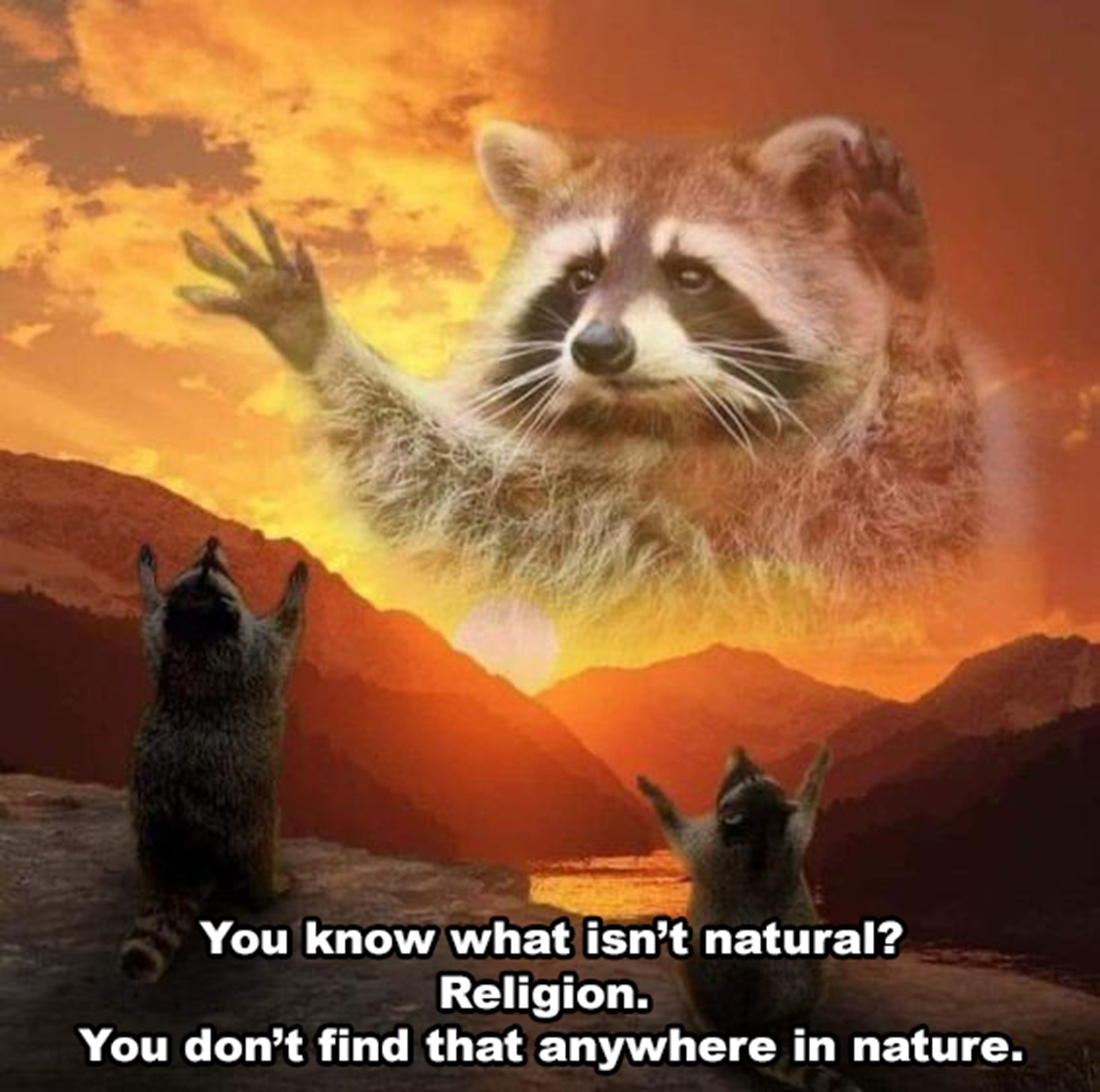
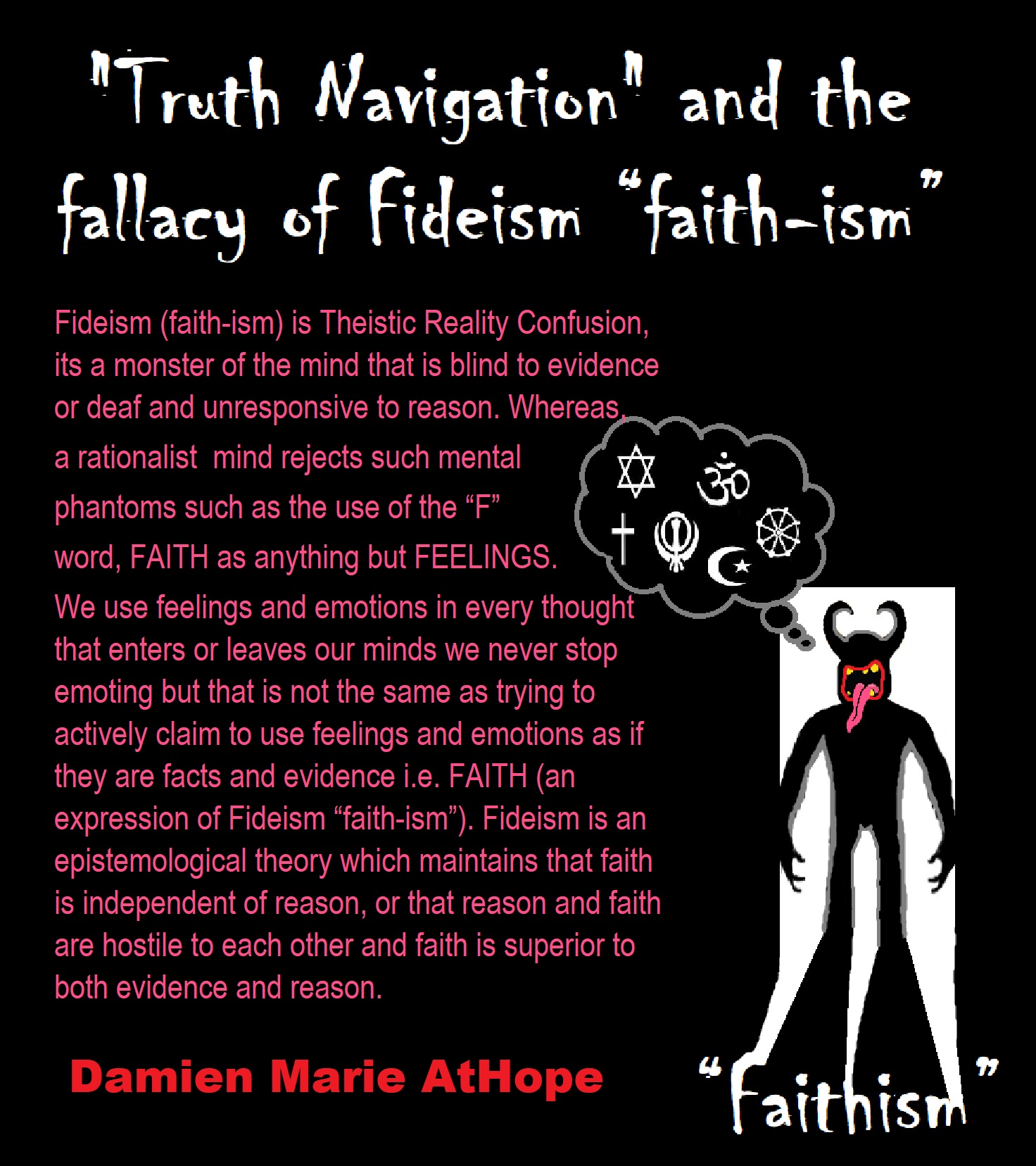
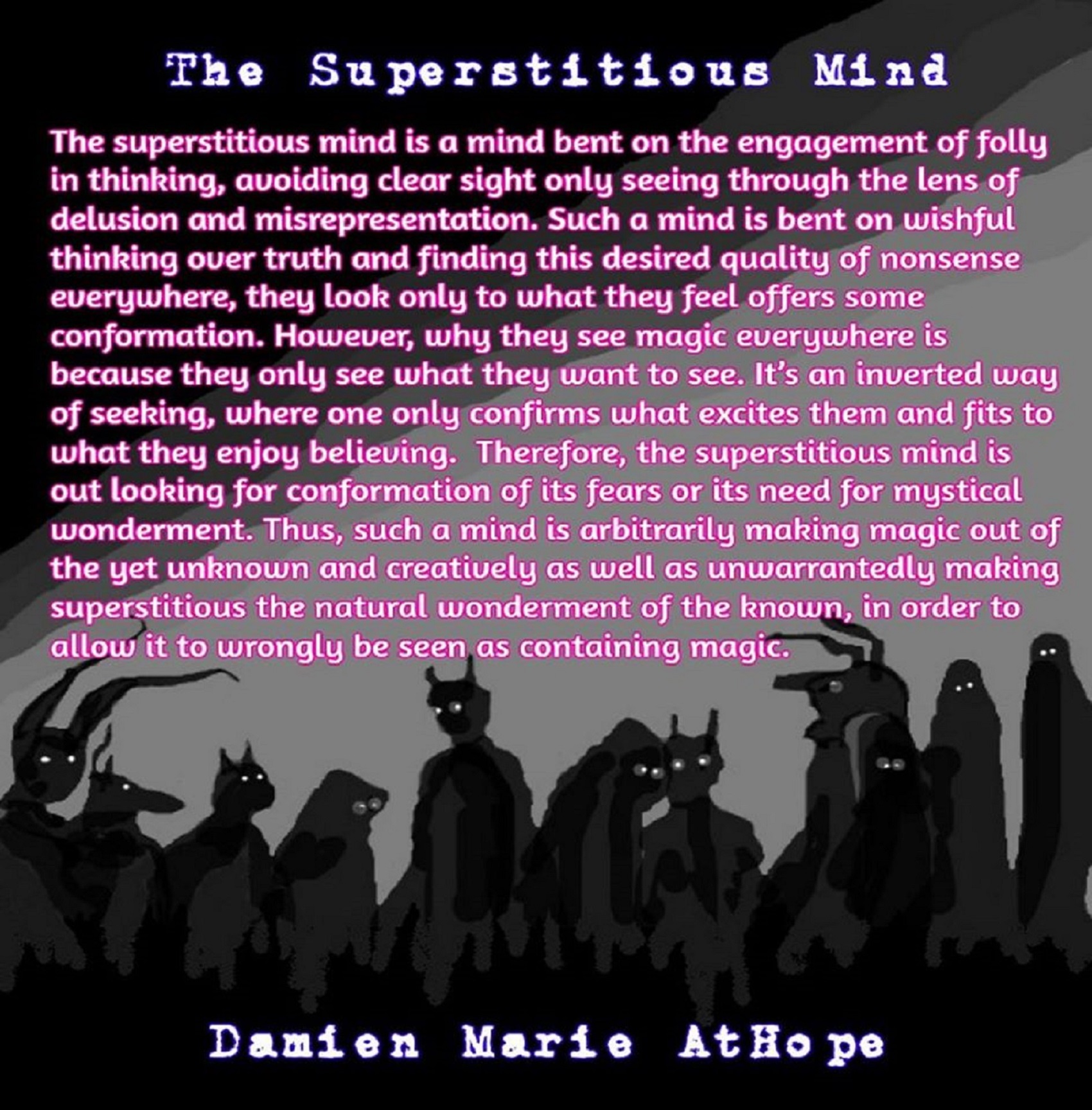
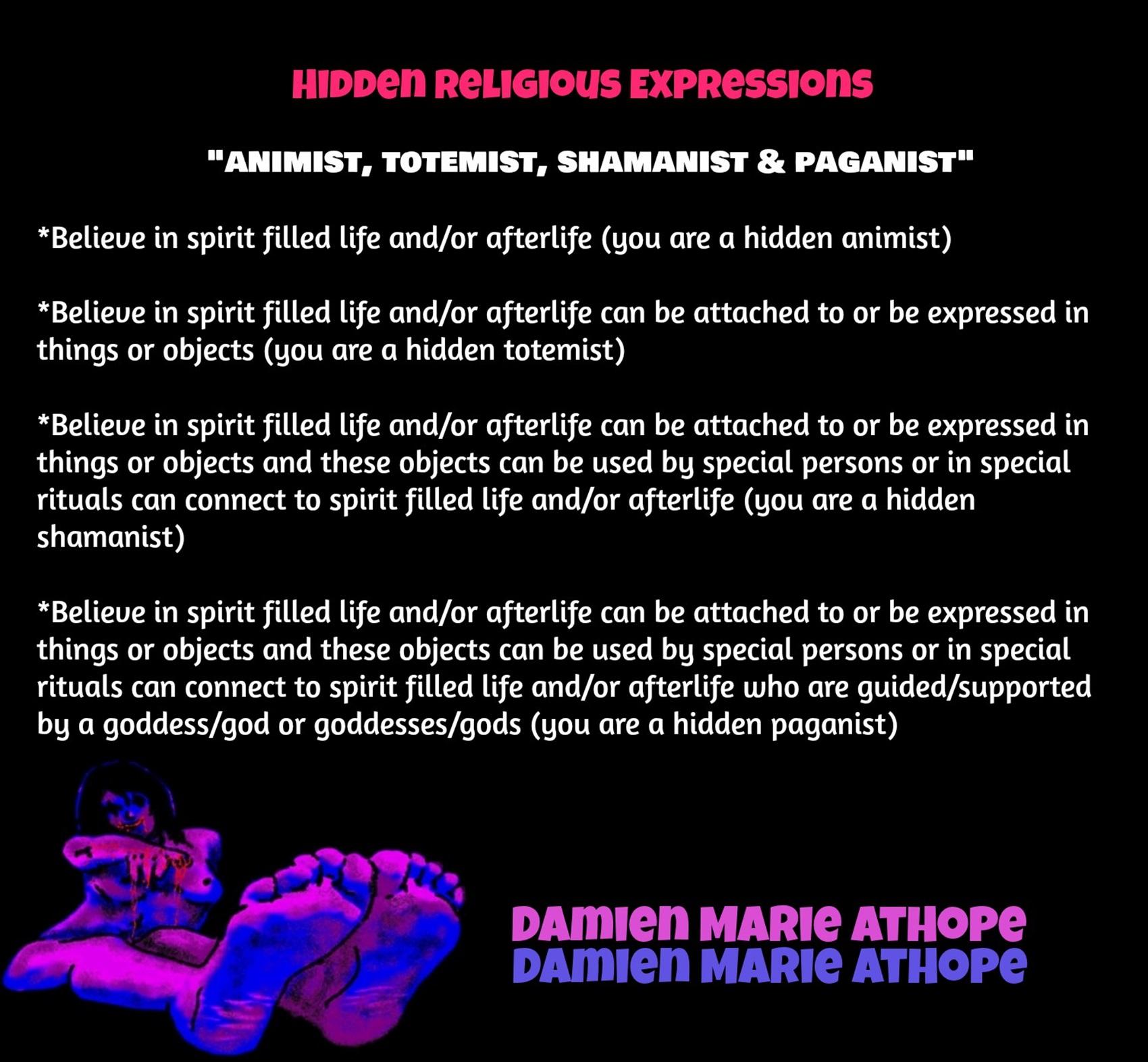
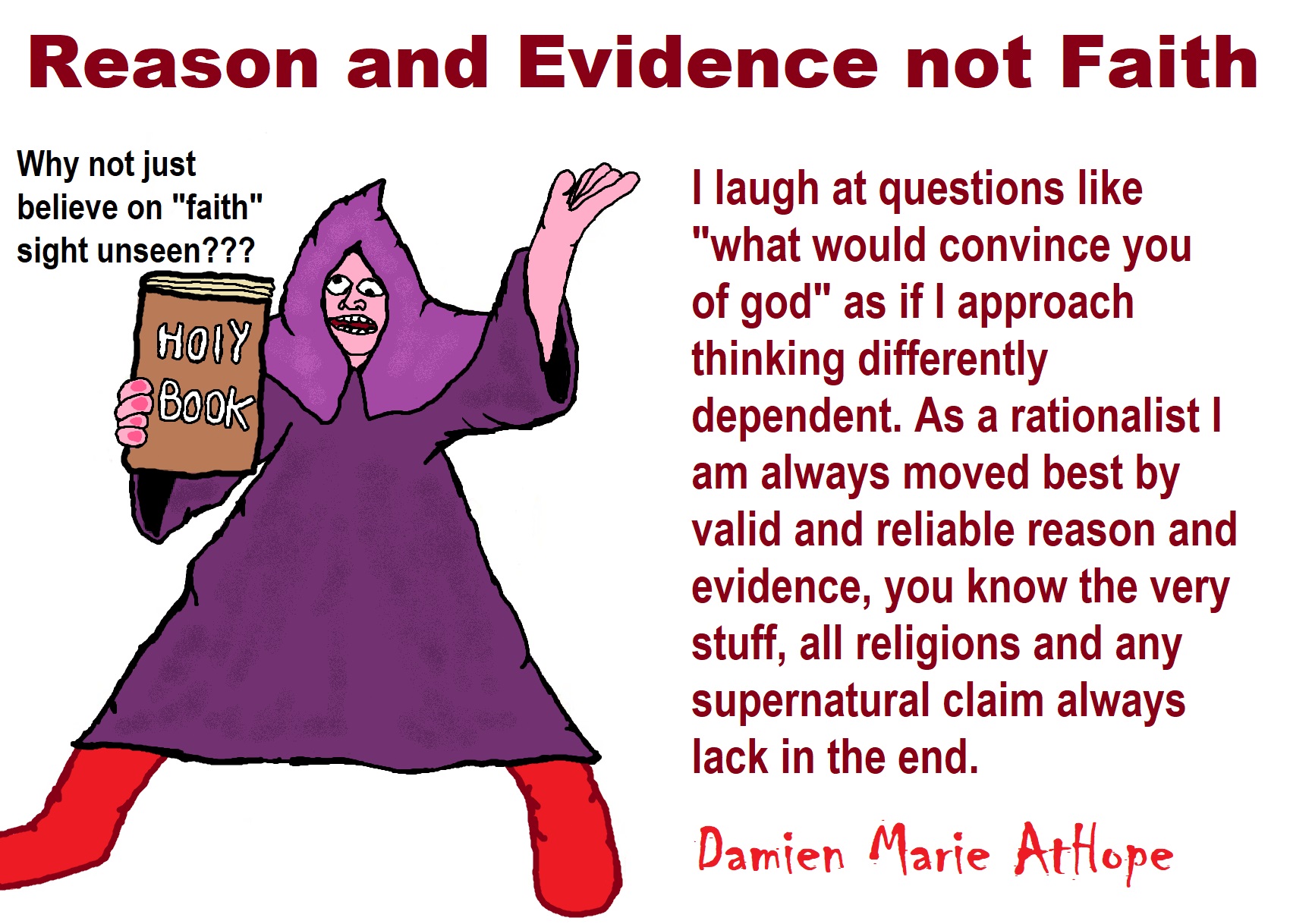


“Theists, there has to be a god, as something can not come from nothing.”
Well, thus something (unknown) happened and then there was something. This does not tell us what the something that may have been involved with something coming from nothing. A supposed first cause, thus something (unknown) happened and then there was something is not an open invitation to claim it as known, neither is it justified to call or label such an unknown as anything, especially an unsubstantiated magical thinking belief born of mythology and religious storytelling.


While hallucinogens are associated with shamanism, it is alcohol that is associated with paganism.
The Atheist-Humanist-Leftist Revolutionaries Shows in the prehistory series:
Show two: Pre-animism 300,000 years old and animism 100,000 years old: related to “Anarchism and Socialism”
Show tree: Totemism 50,000 years old: related to “Anarchism and Socialism”
Show four: Shamanism 30,000 years old: related to “Anarchism and Socialism”
Show five: Paganism 12,000 years old: related to “Anarchism and Socialism”
Show six: Emergence of hierarchy, sexism, slavery, and the new male god dominance: Paganism 7,000-5,000 years old: related to “Anarchism and Socialism” (Capitalism) (World War 0) Elite and their slaves!
Prehistory: related to “Anarchism and Socialism” the division of labor, power, rights, and recourses: VIDEO
Pre-animism 300,000 years old and animism 100,000 years old: related to “Anarchism and Socialism”: VIDEO
Totemism 50,000 years old: related to “Anarchism and Socialism”: VIDEO
Shamanism 30,000 years old: related to “Anarchism and Socialism”: VIDEO
Paganism 12,000 years old: related to “Anarchism and Socialism” (Pre-Capitalism): VIDEO
Paganism 7,000-5,000 years old: related to “Anarchism and Socialism” (Capitalism) (World War 0) Elite and their slaves: VIEDO
Paganism 5,000 years old: progressed organized religion and the state: related to “Anarchism and Socialism” (Kings and the Rise of the State): VIEDO
Paganism 4,000 years old: related to “Anarchism and Socialism” (First Moralistic gods, then the Origin time of Monotheism): VIEDO
I do not hate simply because I challenge and expose myths or lies any more than others being thought of as loving simply because of the protection and hiding from challenge their favored myths or lies.
The truth is best championed in the sunlight of challenge.
An archaeologist once said to me “Damien religion and culture are very different”
My response, So are you saying that was always that way, such as would you say Native Americans’ cultures are separate from their religions? And do you think it always was the way you believe?
I had said that religion was a cultural product. That is still how I see it and there are other archaeologists that think close to me as well. Gods too are the myths of cultures that did not understand science or the world around them, seeing magic/supernatural everywhere.
I personally think there is a goddess and not enough evidence to support a male god at Çatalhöyük but if there was both a male and female god and goddess then I know the kind of gods they were like Proto-Indo-European mythology.
This series idea was addressed in, Anarchist Teaching as Free Public Education or Free Education in the Public: VIDEO
Our 12 video series: Organized Oppression: Mesopotamian State Force and the Politics of power (9,000-4,000 years ago), is adapted from: The Complete and Concise History of the Sumerians and Early Bronze Age Mesopotamia (7000-2000 BC): https://www.youtube.com/watch?v=szFjxmY7jQA by “History with Cy“
Show #1: Mesopotamian State Force and the Politics of Power (Samarra, Halaf, Ubaid)
Show #2: Mesopotamian State Force and the Politics of Power
Show #3: Mesopotamian State Force and the Politics of Power (Uruk and the First Cities)
Show #4: Mesopotamian State Force and the Politics of Power (First Kings)
Show #5: Mesopotamian State Force and the Politics of Power (Early Dynastic Period)
Show #6: Mesopotamian State Force and the Politics of Power
Show #7: Mesopotamian State Force and the Politics of Power (Sargon and Akkadian Rule)
Show #9: Mesopotamian State Force and the Politics of Power (Gudea of Lagash and Utu-hegal)
Show #12: Mesopotamian State Force and the Politics of Power (Aftermath and Legacy of Sumer)

The “Atheist-Humanist-Leftist Revolutionaries”
Cory Johnston ☭ Ⓐ Atheist Leftist @Skepticallefty & I (Damien Marie AtHope) @AthopeMarie (my YouTube & related blog) are working jointly in atheist, antitheist, antireligionist, antifascist, anarchist, socialist, and humanist endeavors in our videos together, generally, every other Saturday.
Why Does Power Bring Responsibility?
Think, how often is it the powerless that start wars, oppress others, or commit genocide? So, I guess the question is to us all, to ask, how can power not carry responsibility in a humanity concept? I know I see the deep ethical responsibility that if there is power their must be a humanistic responsibility of ethical and empathic stewardship of that power. Will I be brave enough to be kind? Will I possess enough courage to be compassionate? Will my valor reach its height of empathy? I as everyone, earns our justified respect by our actions, that are good, ethical, just, protecting, and kind. Do I have enough self-respect to put my love for humanity’s flushing, over being brought down by some of its bad actors? May we all be the ones doing good actions in the world, to help human flourishing.
I create the world I want to live in, striving for flourishing. Which is not a place but a positive potential involvement and promotion; a life of humanist goal precision. To master oneself, also means mastering positive prosocial behaviors needed for human flourishing. I may have lost a god myth as an atheist, but I am happy to tell you, my friend, it is exactly because of that, leaving the mental terrorizer, god belief, that I truly regained my connected ethical as well as kind humanity.
Cory and I will talk about prehistory and theism, addressing the relevance to atheism, anarchism, and socialism.
At the same time as the rise of the male god, 7,000 years ago, there was also the very time there was the rise of violence, war, and clans to kingdoms, then empires, then states. It is all connected back to 7,000 years ago, and it moved across the world.
Cory Johnston: https://damienmarieathope.com/2021/04/cory-johnston-mind-of-a-skeptical-leftist/?v=32aec8db952d
The Mind of a Skeptical Leftist (YouTube)
Cory Johnston: Mind of a Skeptical Leftist @Skepticallefty
The Mind of a Skeptical Leftist By Cory Johnston: “Promoting critical thinking, social justice, and left-wing politics by covering current events and talking to a variety of people. Cory Johnston has been thoughtfully talking to people and attempting to promote critical thinking, social justice, and left-wing politics.” http://anchor.fm/skepticalleft
Cory needs our support. We rise by helping each other.
Cory Johnston ☭ Ⓐ @Skepticallefty Evidence-based atheist leftist (he/him) Producer, host, and co-host of 4 podcasts @skeptarchy @skpoliticspod and @AthopeMarie
Damien Marie AtHope (“At Hope”) Axiological Atheist, Anti-theist, Anti-religionist, Secular Humanist. Rationalist, Writer, Artist, Poet, Philosopher, Advocate, Activist, Psychology, and Armchair Archaeology/Anthropology/Historian.
Damien is interested in: Freedom, Liberty, Justice, Equality, Ethics, Humanism, Science, Atheism, Antiteism, Antireligionism, Ignosticism, Left-Libertarianism, Anarchism, Socialism, Mutualism, Axiology, Metaphysics, LGBTQI, Philosophy, Advocacy, Activism, Mental Health, Psychology, Archaeology, Social Work, Sexual Rights, Marriage Rights, Woman’s Rights, Gender Rights, Child Rights, Secular Rights, Race Equality, Ageism/Disability Equality, Etc. And a far-leftist, “Anarcho-Humanist.”
I am not a good fit in the atheist movement that is mostly pro-capitalist, I am anti-capitalist. Mostly pro-skeptic, I am a rationalist not valuing skepticism. Mostly pro-agnostic, I am anti-agnostic. Mostly limited to anti-Abrahamic religions, I am an anti-religionist.
To me, the “male god” seems to have either emerged or become prominent around 7,000 years ago, whereas the now favored monotheism “male god” is more like 4,000 years ago or so. To me, the “female goddess” seems to have either emerged or become prominent around 11,000-10,000 years ago or so, losing the majority of its once prominence around 2,000 years ago due largely to the now favored monotheism “male god” that grow in prominence after 4,000 years ago or so.
My Thought on the Evolution of Gods?
Animal protector deities from old totems/spirit animal beliefs come first to me, 13,000/12,000 years ago, then women as deities 11,000/10,000 years ago, then male gods around 7,000/8,000 years ago. Moralistic gods around 5,000/4,000 years ago, and monotheistic gods around 4,000/3,000 years ago.
To me, animal gods were likely first related to totemism animals around 13,000 to 12,000 years ago or older. Female as goddesses was next to me, 11,000 to 10,000 years ago or so with the emergence of agriculture. Then male gods come about 8,000 to 7,000 years ago with clan wars. Many monotheism-themed religions started in henotheism, emerging out of polytheism/paganism.
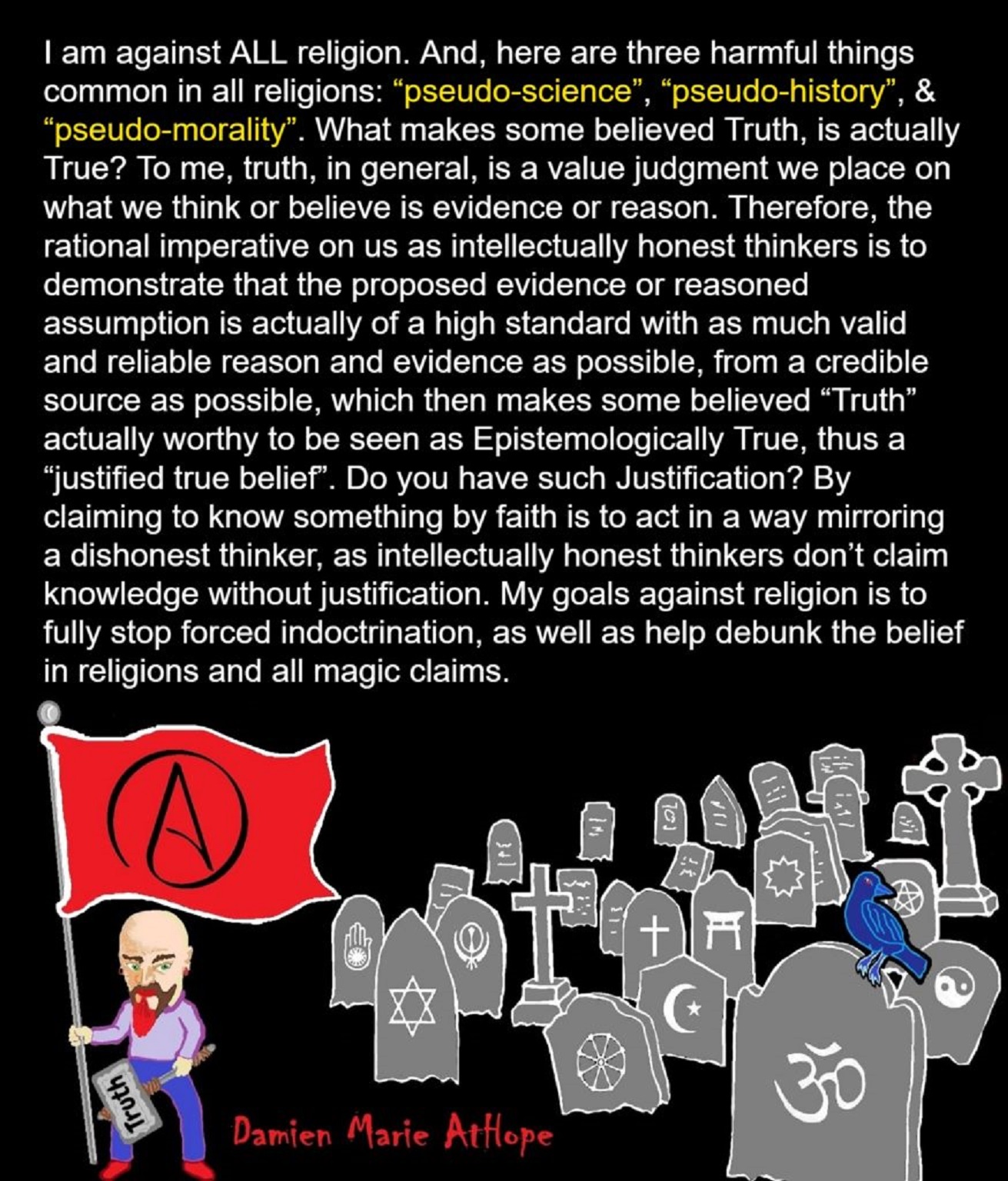

Damien Marie AtHope (Said as “At” “Hope”)/(Autodidact Polymath but not good at math):
Axiological Atheist, Anti-theist, Anti-religionist, Secular Humanist, Rationalist, Writer, Artist, Jeweler, Poet, “autodidact” Philosopher, schooled in Psychology, and “autodidact” Armchair Archaeology/Anthropology/Pre-Historian (Knowledgeable in the range of: 1 million to 5,000/4,000 years ago). I am an anarchist socialist politically. Reasons for or Types of Atheism
My Website, My Blog, & Short-writing or Quotes, My YouTube, Twitter: @AthopeMarie, and My Email: damien.marie.athope@gmail.com

